Abarth 500 595 695 vs Dacia Spring – Which car suits you better?
Everyday use, family trips or long-distance drives – here’s where the differences show.
Discover whether Abarth 500 595 695 or Dacia Spring fits your lifestyle better.
Costs and Efficiency:
When it comes to price and running costs, the biggest differences usually appear. This is often where you see which car fits your budget better in the long run.
Dacia Spring has a clearly advantage in terms of price – it starts at 14500 £, while the Abarth 500 595 695 costs 32600 £. That’s a price difference of around 18077 £.
In terms of energy consumption, the advantage goes to the Dacia Spring: with 13.20 kWh per 100 km, it’s noticeable more efficient than the Abarth 500 595 695 with 17.10 kWh. That’s a difference of about 3.90 kWh.
As for range, the Abarth 500 595 695 performs a bit better – achieving up to 265 km, about 37 km more than the Dacia Spring.
Engine and Performance:
Power, torque and acceleration say a lot about how a car feels on the road. This is where you see which model delivers more driving dynamics.
When it comes to engine power, the Abarth 500 595 695 has a decisively edge – offering 155 HP compared to 65 HP. That’s roughly 90 HP more horsepower.
In acceleration from 0 to 100 km/h, the Abarth 500 595 695 is significantly quicker – completing the sprint in 7 s, while the Dacia Spring takes 13.70 s. That’s about 6.70 s faster.
In terms of top speed, the Abarth 500 595 695 performs a bit better – reaching 155 km/h, while the Dacia Spring tops out at 125 km/h. The difference is around 30 km/h.
There’s also a difference in torque: Abarth 500 595 695 pulls clearly stronger with 235 Nm compared to 125 Nm. That’s about 110 Nm difference.
Space and Everyday Use:
Beyond pure performance, interior space and usability matter most in daily life. This is where you see which car is more practical and versatile.
Both vehicles offer seating for 4 people.
In curb weight, Dacia Spring is evident lighter – 1013 kg compared to 1410 kg. The difference is around 397 kg.
In terms of boot space, the Dacia Spring offers clearly perceptible more room – 308 L compared to 185 L. That’s a difference of about 123 L.
In maximum load capacity, the Dacia Spring performs convincingly better – up to 1004 L, which is about 454 L more than the Abarth 500 595 695.
When it comes to payload, Abarth 500 595 695 clearly perceptible takes the win – 385 kg compared to 302 kg. That’s a difference of about 83 kg.
Who comes out on top?
Overall, the Abarth 500 595 695 shows itself to be dominates this comparison and secures the title of DriveDuel Champion.
It convinces with the more balanced overall package and proves to be the more versatile choice for everyday use.
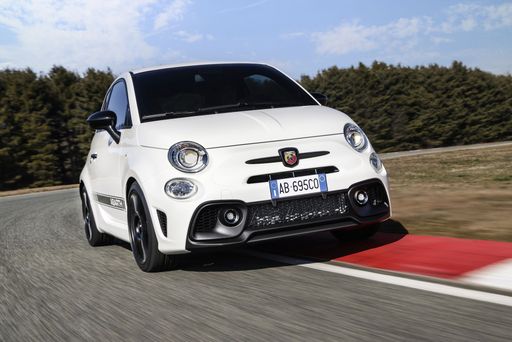 @ Abarth / Stellantis Media
@ Abarth / Stellantis Media
Abarth 500 595 695
Abarth 500 595 695
The Abarth 500, particularly in its 595 and 695 renditions, captures the spirit of Italian motoring with its compact yet aggressive design. Known for its lively performance and distinctive styling, this little powerhouse is a joy to drive, offering an engaging experience that appeals to enthusiasts. With its rich motorsport heritage, the Abarth 500 embodies the essence of fun and excitement on both the streets and the race track.
details @ Abarth / Stellantis Media
@ Abarth / Stellantis Media
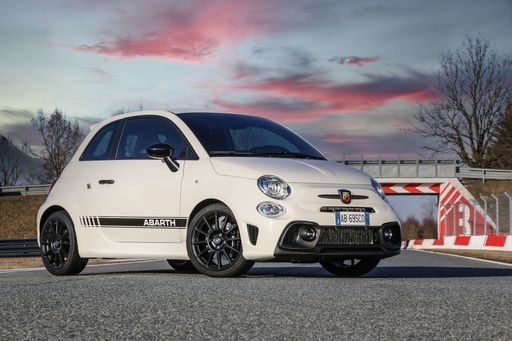 @ Abarth / Stellantis Media
@ Abarth / Stellantis Media
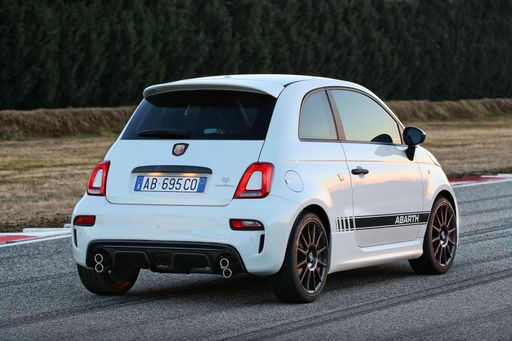 @ Abarth / Stellantis Media
@ Abarth / Stellantis Media
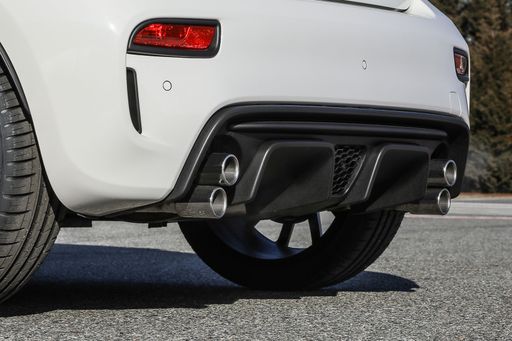 @ Abarth / Stellantis Media
@ Abarth / Stellantis Media
 @ Abarth / Stellantis Media
@ Abarth / Stellantis Media
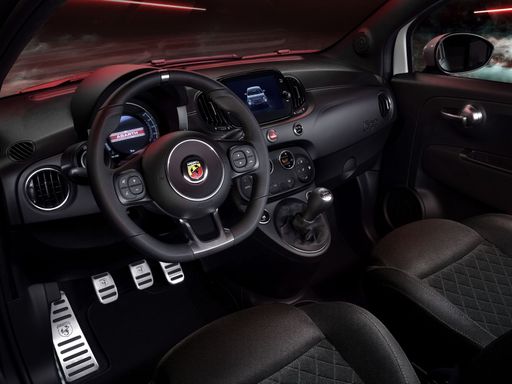 @ Abarth / Stellantis Media
@ Abarth / Stellantis Media
Dacia Spring
The Dacia Spring stands out as an affordable and environmentally friendly option in the electric vehicle market, combining practicality with a compact design ideal for urban settings. Its minimalist interior, while basic, provides all the essential features needed for a comfortable drive, reflecting its cost-effective approach. The vehicle's performance suits city driving, making it an appealing choice for those seeking an entry-level electric car.
details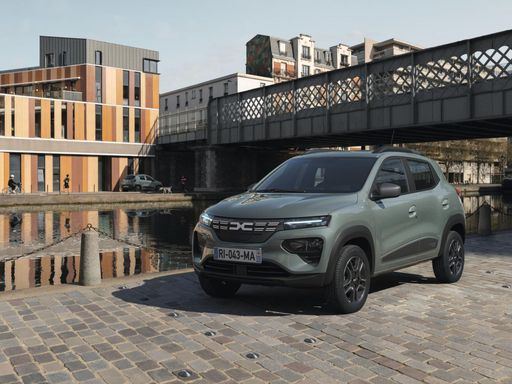 @ Dacia / Renault Group Media
@ Dacia / Renault Group Media
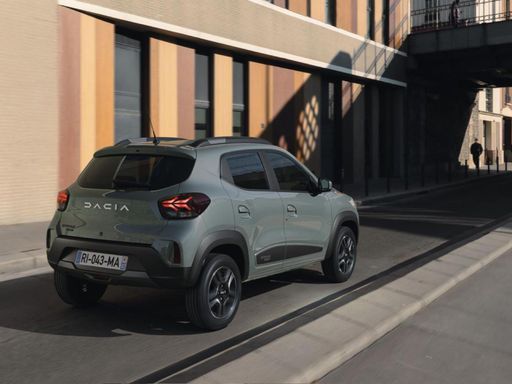 @ Dacia / Renault Group Media
@ Dacia / Renault Group Media
 @ Dacia / Renault Group Media
@ Dacia / Renault Group Media
 @ Abarth / Stellantis Media
@ Abarth / Stellantis Media
|
 @ Dacia / Renault Group Media
@ Dacia / Renault Group Media
|
|
|
|
Costs and Consumption |
|
|---|---|
|
Price
32600 - 39400 £
|
Price
14500 - 17100 £
|
|
Consumption L/100km
-
|
Consumption L/100km
-
|
|
Consumption kWh/100km
17.1 - 18.8 kWh
|
Consumption kWh/100km
13.2 - 14.1 kWh
|
|
Electric Range
242 - 265 km
|
Electric Range
225 - 228 km
|
|
Battery Capacity
37.80 kWh
|
Battery Capacity
26.80 kWh
|
|
co2
0 g/km
|
co2
0 g/km
|
|
Fuel tank capacity
-
|
Fuel tank capacity
-
|
Dimensions and Body |
|
|---|---|
|
Body Type
Hatchback
|
Body Type
SUV
|
|
Seats
4
|
Seats
4
|
|
Doors
3
|
Doors
5
|
|
Curb weight
1410 - 1435 kg
|
Curb weight
1013 - 1050 kg
|
|
Trunk capacity
185 L
|
Trunk capacity
308 L
|
|
Length
3673 mm
|
Length
3701 mm
|
|
Width
1682 mm
|
Width
1583 mm
|
|
Height
1518 mm
|
Height
1519 mm
|
|
Max trunk capacity
550 L
|
Max trunk capacity
1004 L
|
|
Payload
370 - 385 kg
|
Payload
265 - 302 kg
|
Engine and Performance |
|
|---|---|
|
Engine Type
Electric
|
Engine Type
Electric
|
|
Transmission
Automatic
|
Transmission
Automatic
|
|
Transmission Detail
-
|
Transmission Detail
Reduction Gearbox
|
|
Drive Type
Front-Wheel Drive
|
Drive Type
Front-Wheel Drive
|
|
Power HP
155 HP
|
Power HP
44 - 65 HP
|
|
Acceleration 0-100km/h
7 s
|
Acceleration 0-100km/h
13.7 - 19.1 s
|
|
Max Speed
155 km/h
|
Max Speed
125 km/h
|
|
Torque
235 Nm
|
Torque
113 - 125 Nm
|
|
Number of Cylinders
-
|
Number of Cylinders
-
|
|
Power kW
114 kW
|
Power kW
33 - 48 kW
|
|
Engine capacity
-
|
Engine capacity
-
|
General |
|
|---|---|
|
Model Year
2023
|
Model Year
2024
|
|
CO2 Efficiency Class
A
|
CO2 Efficiency Class
A
|
|
Brand
Abarth
|
Brand
Dacia
|
Is the Abarth 500 595 695 offered with different drivetrains?
The Abarth 500 595 695 is offered with Front-Wheel Drive.
The prices and data displayed are estimates based on German list prices and may vary by country. This information is not legally binding.
